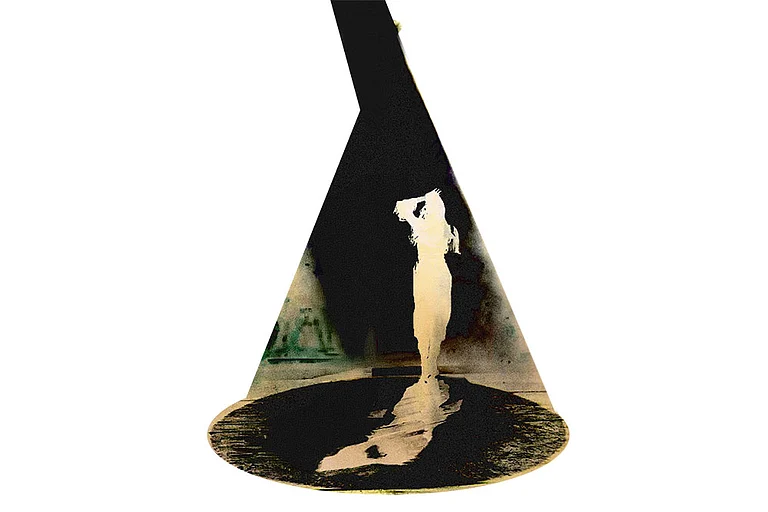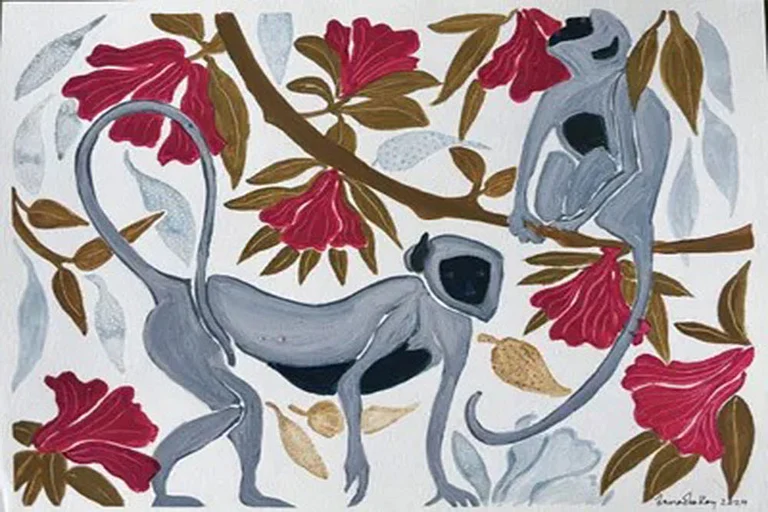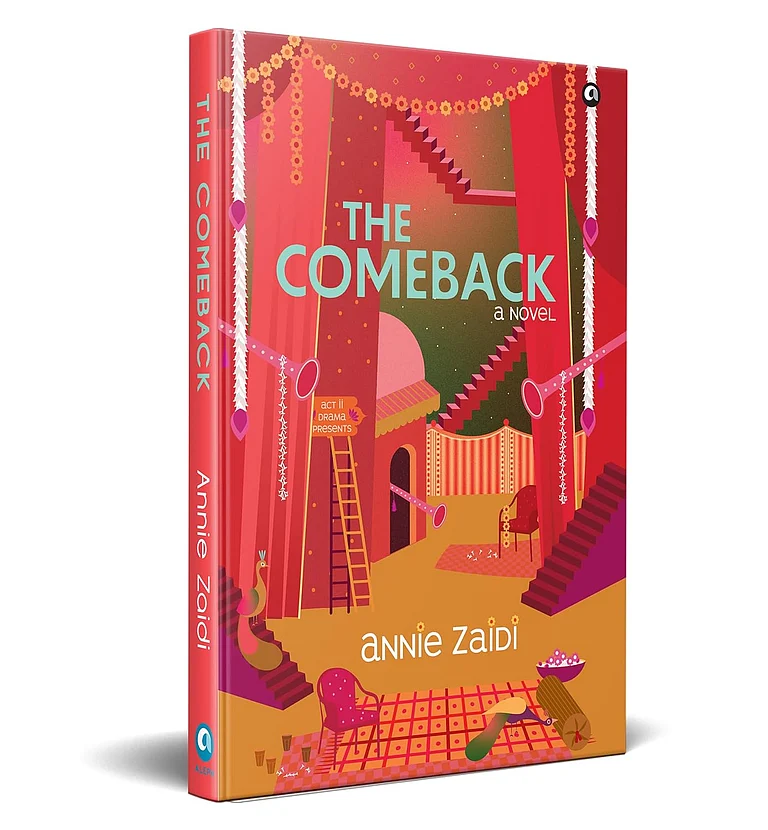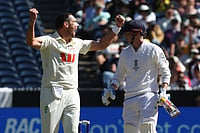This is a novel the likes of which I have not read in recent times for the unusual themes it deals with, the almost dystopian, apocalyptic scenarios presented with felicitous ease, are so riveting. All the ills of contemporary times proceeding from human greed and unchecked corporate aggression mixed with glimpses into parallel worlds and esoterica of the rarest kind taking the action forward—these arranged into the frame of a suspense thriller—would roughly describe this novel.
There are five sections, titled “Incantations”, “Thrall”, “Visible and Invisible”, “Ouroboros”, and “Telos”.
The text is made up of the interwoven narrative voices of Chanchal Mitra and that of the omniscient author.
The first chapter in the first section, "The Horologist of Anantanagar,” sets the stage for the action of the novel, which is mainly placed in three fictional Indian cities—Aukatabad that has resonances of our National Capital Region (NCR), Anantanagar, or the Eastern City, easily resembling Kolkata; later in the novel, is Bhaskarnagar, a city in the western deserts, which could be Jaipur, Jodhpur or Udaipur or an imaginary city created with parts from all three. The main action takes place in these three cities. But a crucial road-trip across, presumably, the Gangetic plains, crossing the terai, and reaching a spot somewhere in the Thunder Mountains (The Himalayas) and a small town perched on the mountainside, from where the snow-capped peaks are visible—resembling possibly a town near Darjeeling, possibly Kalimpong, because a final road trip takes the protagonists to Anantanagar (The Limitless City), act as the locale for the fourth stretch of the action.
Jayanta Roy Kapoor (JRK) plans to make a rare, ecstasy-inducing product called Felicity, developed from magic mushrooms, marijuana, etc. He had tasted on Goa beaches in his youth, and he plans to market it through his Atman Chocolate Company. His chief scientist Vincent Dutta reaches a breakthrough in the research, which will enable JRK to pack temporary nirvana into Rs 50 sachets and sell it to common people like paan masala. Felicity has the potential to sabotage normal human activities. An esoteric society that exists over centuries streamlining human affairs, Nine Unknown Men, or simply Nine, which includes, inventors, scientists and several other legendary figures, decides to stop JRK. They employ a woman, Zeeta, to infiltrate the research programme. She manages to poison Vincent and steal samples and research notes but dies in a car crash during her escape. Nine has retrieved the partially burned notes.
Sujata, whom Nine members call ‘sister’ mishandles the mission meant to use Chanchal to stop JRK and, as a result, he develops a dual personality syndrome, in which he begins to lead the lives of JRK and Chanchal simultaneously. Believing he is JRK, and that the original JRK is a fake, Chanchal/JRK aspires to take over JRK’s business empire. The gradual development of this dual personality is revealed by the author by cleverly inserting clues from the very beginning like in a treasure-hunt, mainly employing the word you, as being addressed by Chanchal.
Eventually Chanchal and Sujata meet on a train to Bhaskarnagar, and then live together in her guest house and develop a romantic relationship, which Nine objects to. Chanchal/JRK is impatient to retrieve the business empire and leaves for Aukatabad. JRK’s hatchet-man Bullet and an accomplice set fire to Sujata’s guest house, from where she escapes and heads to Aukatabad. Chanchal/JRK has already reached Aukatabad and met with ‘Comrade LJ’. The trio plans to kidnap the real JRK, and the shootout scene with which the novel opens, ensues, and the narrative moves at a brisk pace from here.
Some of the issues the novel projects are dismal, and the products of ‘development’, 'modernisation’, etc. Unprecedented climate change triggering abrupt shifts in seasons, extremes of heat and cold weather patterns, diluvial rains in a desert region causing havoc, hopelessly unmanageable environmental pollution brought about by unchecked consumerism—these are some of the elements that take the action forward.
The heritage buildings being singled out for demolition, in whose place glittering steel, glass and plastic towers come up, is just one of the environmental challenges presented. Anyone who remembers Kolkata of the 1970s onwards and has noted the drastic changes that have come over the cityscape from the end of the 20th century on, will feel the throb of nostalgia reading the following passage.
“The old buildings: the Brit-built ones like great grandfathers, those of the babus like profligate maternal uncles with many secrets…and the more recent ones like ours, in a mix of styles, are their common enemies. Driven on by their promoter bosses, the dalals go about targeting these grand mansions, these haunted houses, these greying three-stories with plans of high-rises, multi-stories, shopping malls and hyper markets. Each time they succeed in coercing the original owners, usually with words, square feet and smoking Mungeri katas in their belts, the promoters descend with their sledgehammers and labour platoons.”
Environmental pollution, like the sickly-sweet odour of a chemical spill, a river blackened by the contents of the sewage of a megalopolis, the stench that overpowers a stretch of several kilometres as a train negotiates a region with a river on its one side and rows upon rows of tanneries on the other, are but a few. Extremes brought about by the effects of climate change, such as the infernal heat experienced with the air-conditioning failing in a car that is passing through a white-hot day-stretch on melting asphalt, a suffocating room where electricity is disrupted as the temperature hits the roof, untimely rains in a desert that wipes out human settlements, are described. Amitav Ghosh’s climate classic The Great Derangement acts as a pointer at a particular section of the novel.
The writing style, going into minuscule details while commenting on the actions of a character, or on situations, using a vibrant, resonating, present-day language, grips the reader.
One is struck by the sustained density of Chaudhary’s poetic prose. Break the lines and arrange them according to the word-rhythm and tone, and it indeed is rich poetry. This the reader can witness sprinkled throughout the novel. Look at this line, for example: “…A lowering sky and the evening sun lost in a mile-high cumulonimbus.”
On its front cover, Spellcasters carries this riveting quote from Amitav Ghosh: “A phantasmagoric journey through an alternative reality of collapsed time, hallucinatory visions and spectral visitations: an unexpected and unsettling roller-coaster ride.” This proved to be true to the letter, as I began to read the book. I couldn’t get past the prelims without noticing two more quotes on the page opposite the ‘Contents’. One from Virgil's Aeneid, that reads: “Do the gods light this fire in our hearts or does each man’s mad desire become his god?” Certainly food for thought in these tantalising times, right? But the next one will take your breath away: “The ALL is MIND; The Universe is Mental.” This is found in The Kybalion: A Study of the Hermetic Philosophy of Ancient Greece and Rome written by ‘The Three Initiates’, (often identified as the New Thought pioneer William Walker Atkinson) as the first of the Seven Hermetic Principles, the one that defines Mentalism.
Apart from glimpses into a world of parallel realities or dimensions, Spellcasters tells a story of our confused, orgiastic, post-millennial urban existence steeped in excesses of all sorts, in the face of certain doom being brought about by drastic climate change, overarching environmental pollution and a predatory cultural milieu.
(Dr A J Thomas is a poet, translator and former editor of 'Indian Literature')
(The Book 'Spellcasters' has been published by 'Niyogi Books')






















